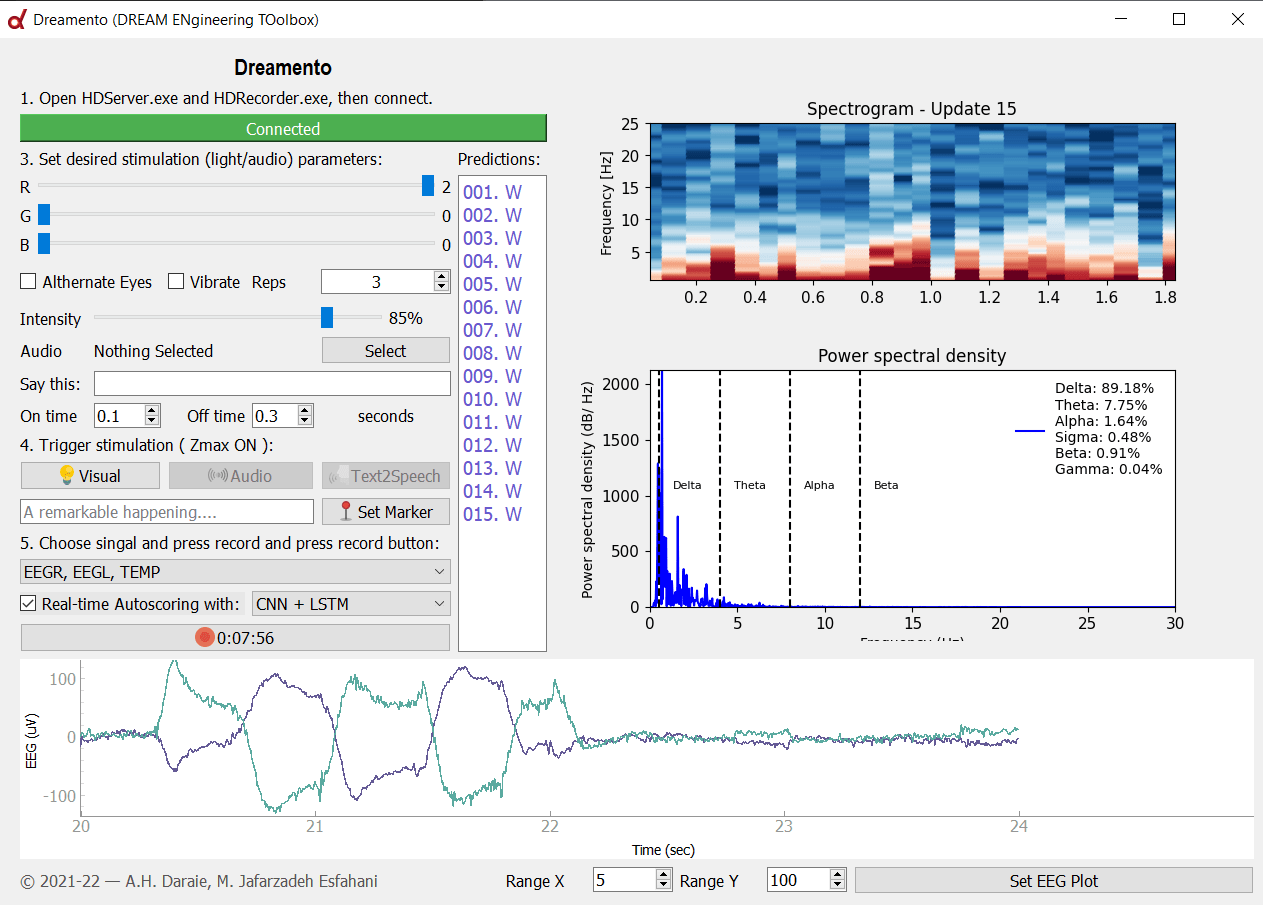The gold standard for studying human sleep is polysomnography (PSG) which consists of electroencephalography (EEG), electromyography (EMG), and electrooculography (EOG) as the primary physiological signals. However, it is difficult, expensive, and data analysis takes a lot of time.
Now, scientists from the Netherlands and the USA—Esfahani, Daraie, Weber, as well as notable researcher on the subject of lucid dreams (LD), Martin Dresler—have presented a new program that has the potential to change the status quo to the scientific community. Dreamento, as the program is called, was developed for the analysis of dreams, including lucid ones, but can be adapted for other tasks.
The authors aimed to facilitate the study of dreams by creating a tool for conducting experiments with large sample sizes. Dreamento is capable of monitoring and analyzing sleep in real time with the use of ZMax—a small device that is attached to the subject’s head.
As the authors promise, with the help of Dreamento, it is possible to study the effectiveness of various methods of lucid dream induction, in different places, and on a large scale, as well as explore the possibilities of establishing a two-way communication between the dreamer and the outer world.
The program is an open-source tool and is available on GitHub.
The article was published in July 2022 on the arXiv website of Cornell University.
Get all the latest news about lucid dreams via our channels on Telegram, Instagram, Facebook




